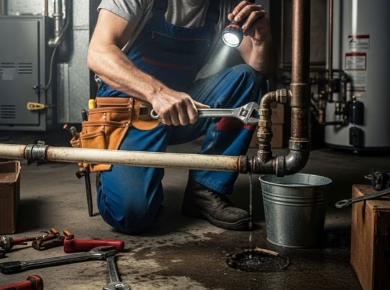Thinking about restoring a radial arm saw? you’ve probably encountered the problems while dealing with a tool that’s seen better days—like when you crank the motor and it just hums ominously without cutting through wood. After helping countless people breathe new life into their aging saws, here’s what we know actually works.
Radial arm saws, once the backbone of woodworking shops, have fallen out of favor in the age of table saws and miter saws. But for many enthusiasts, these machines represent a blend of nostalgia and unmatched versatility. A properly restored radial arm saw can not only serve as a reliable workhorse but also embody craftsmanship and history. This article will guide you through the restoration process, ensuring you can bring one of these classic tools back to life with precision and care.
Assessing the Condition of Your Radial Arm Saw
Before diving into restoration, take a step back and evaluate the condition of your radial arm saw. Look for several key indicators:
Visual Inspection
Start with a thorough visual inspection. Look for rust on the arm and base, which can be a sign of moisture damage. Pay attention to the condition of the blade; dull blades can cause more problems than they solve. Check the motor for any signs of wear or damage.
Functional Testing
Next, plug in the saw and perform a functional test. Listen for any unusual noises—grinding, rattling, or excessive vibration could indicate internal issues. A smooth, even hum is what you want to hear. If the saw doesn’t turn on, it may be an electrical issue that requires further investigation.
Here’s Exactly How to Diagnose Common Problems
1. Test the Motor: Disconnect the saw, then use a multimeter to check the continuity of the motor. If there’s no continuity, you may need a replacement.
2. Examine the Bearings: Remove the blade and inspect the bearings. If they feel gritty or don’t spin freely, they may need lubrication or replacement.
3. Check the Power Switch: A faulty power switch can often be the culprit for a non-starting motor. Use your multimeter to check for continuity when the switch is engaged.
Cleaning and Preparing for Restoration
Once you have assessed the condition of your saw, it’s time to clean and prepare it for restoration.
Disassembly
Disassemble the saw carefully, taking photos at each step for reference during reassembly. Keep all screws and parts organized. This is where many DIY restorers go wrong—losing small parts can lead to headaches later on.
Deep Cleaning
Use a combination of degreaser and rust remover on the metal surfaces. A wire brush can remove stubborn rust, but be careful not to scratch the surface of the arm or base.
1. For Rust Removal: Soak rusted parts in vinegar for several hours, then scrub with a brass brush for a gentler touch.
2. Cleaning the Table Surface: Use a wood-safe cleaner on the table surface to ensure it’s free from debris and grime.
Lubrication
Now, here’s where most tutorials get it wrong: they skip lubrication. Apply a light coat of machine oil to all moving parts, including bearings and pivot points. This will ensure your saw operates smoothly once reassembled.
Rebuilding the Motor: A Key Component
The motor is the heart of your radial arm saw, so it’s crucial to ensure it’s in good shape.
Motor Inspection and Testing
Inspect the motor for signs of wear. Check the brushes for wear; if they’re less than 1/4 inch, it’s time for a replacement.
Rewiring the Motor
If you encounter electrical issues, it might be necessary to rewire the motor. Here’s how:
1. Disconnect Power: Always ensure the saw is unplugged.
2. Access the Wiring: Remove the motor cover to access the wiring.
3. Replace Wires: If any wires look frayed or damaged, replace them with wires of the same gauge.
Testing the Motor Again
Once you’ve completed the rewiring, perform a continuity test again to ensure everything is functioning correctly.
Blade Replacement: Choosing the Right One
When it comes to a radial arm saw, the blade choice can make or break your experience.
Understanding Blade Types
Radial arm saws can handle various types of blades—crosscut, ripping, and dado blades.
Choosing the Right Size and Tooth Count
For most woodworking projects, a 10-inch blade with a 40-tooth configuration is a versatile choice. However, if you’re cutting hardwood, consider using a blade with a higher tooth count for a cleaner cut.
Reassembly: Bringing It All Together
With all components cleaned, lubricated, and repaired, it’s time to reassemble your radial arm saw.
Careful Reassembly
Follow your earlier photos as a guide. Ensure all screws are tightened to avoid any future issues, but be mindful not to over-tighten, as this can lead to stripped threads.
Final Adjustments
Once reassembled, make any necessary adjustments to the saw’s alignment. Check that the blade is parallel to the miter slot for accurate cuts.
Testing Your Restored Radial Arm Saw
With everything back in place, it’s crucial to perform a test run.
Initial Testing
Start with a few test cuts on scrap wood. Listen for any irregular sounds, and watch for any wobbling.
Fine-Tuning Your Cuts
Adjust the height and angle of the blade as needed. After a few successful cuts, you can feel confident in your saw’s performance.
Maintaining Your Radial Arm Saw
Now that your saw is restored, maintaining it is key to ensuring it lasts for years to come.
Routine Maintenance Tips
1. Regular Cleaning: After each use, wipe down the saw to prevent buildup of dust and debris.
2. Lubrication Schedule: Lubricate moving parts every few months or after heavy use.
3. Blade Care: Keep the blade clean, and sharpen it regularly to maintain cutting efficiency.
Never overlook the importance of safety; always wear protective gear, including goggles and ear protection, when using your radial arm saw.
Conclusion: The Joy of Restoration
Bringing a radial arm saw back to life isn’t just a project; it’s a journey filled with lessons and satisfaction. You’re not just restoring a tool; you’re reviving a piece of history that can serve you for years to come. Every scratch tells a story, and every cut you make will be a tribute to the craftsmanship and effort you poured into your restoration project. Embrace the process and enjoy the benefits of your hard work.



